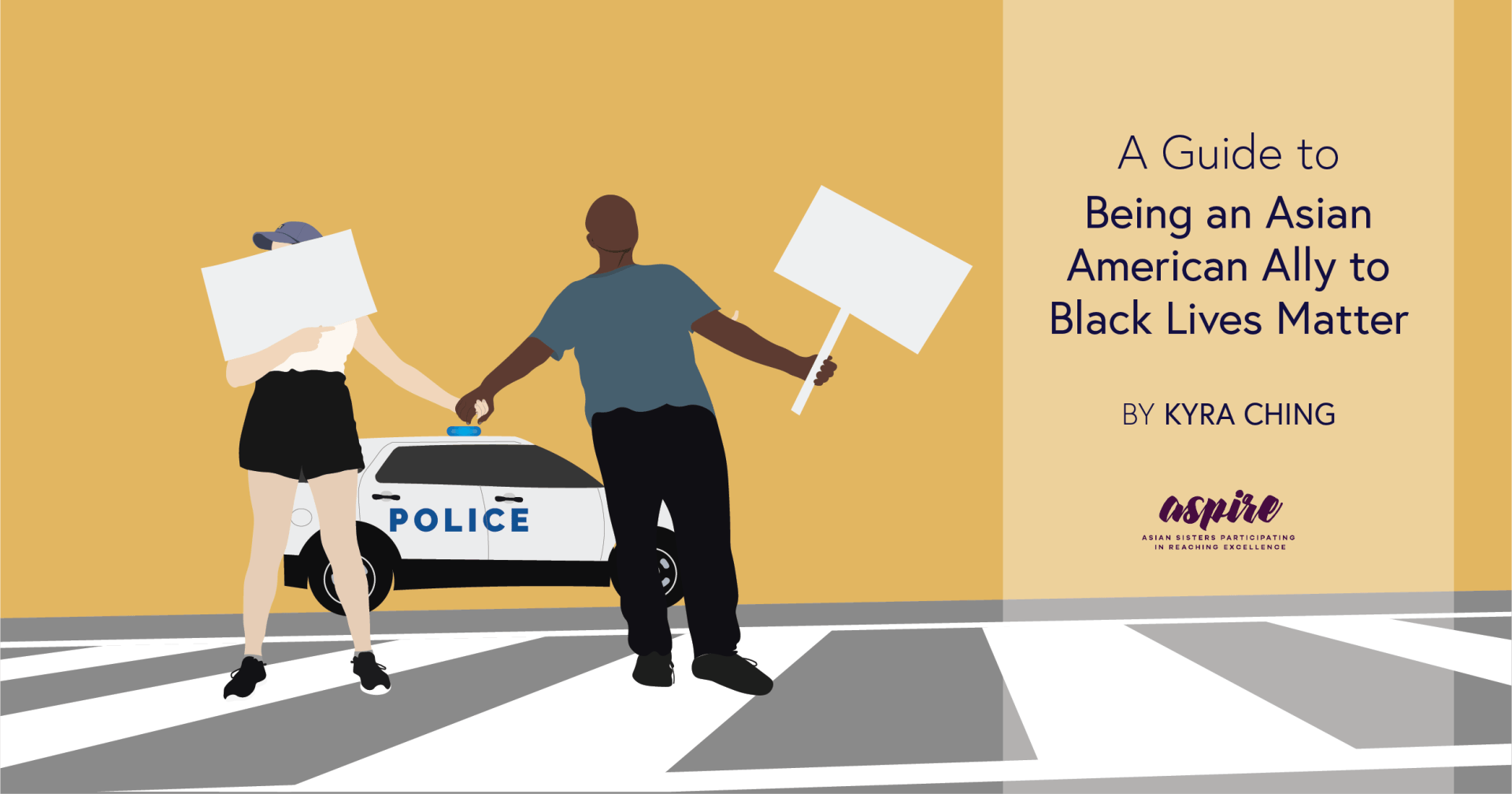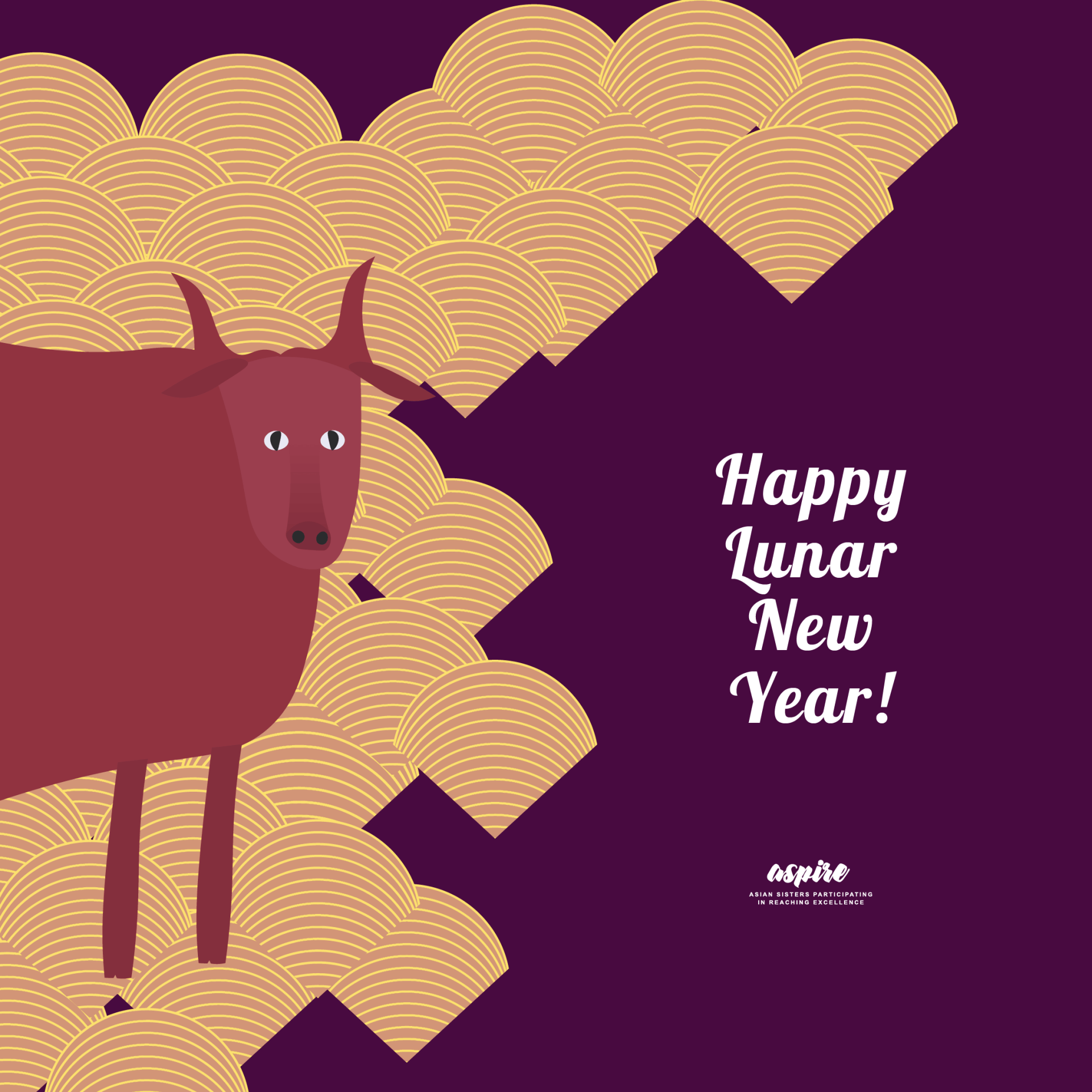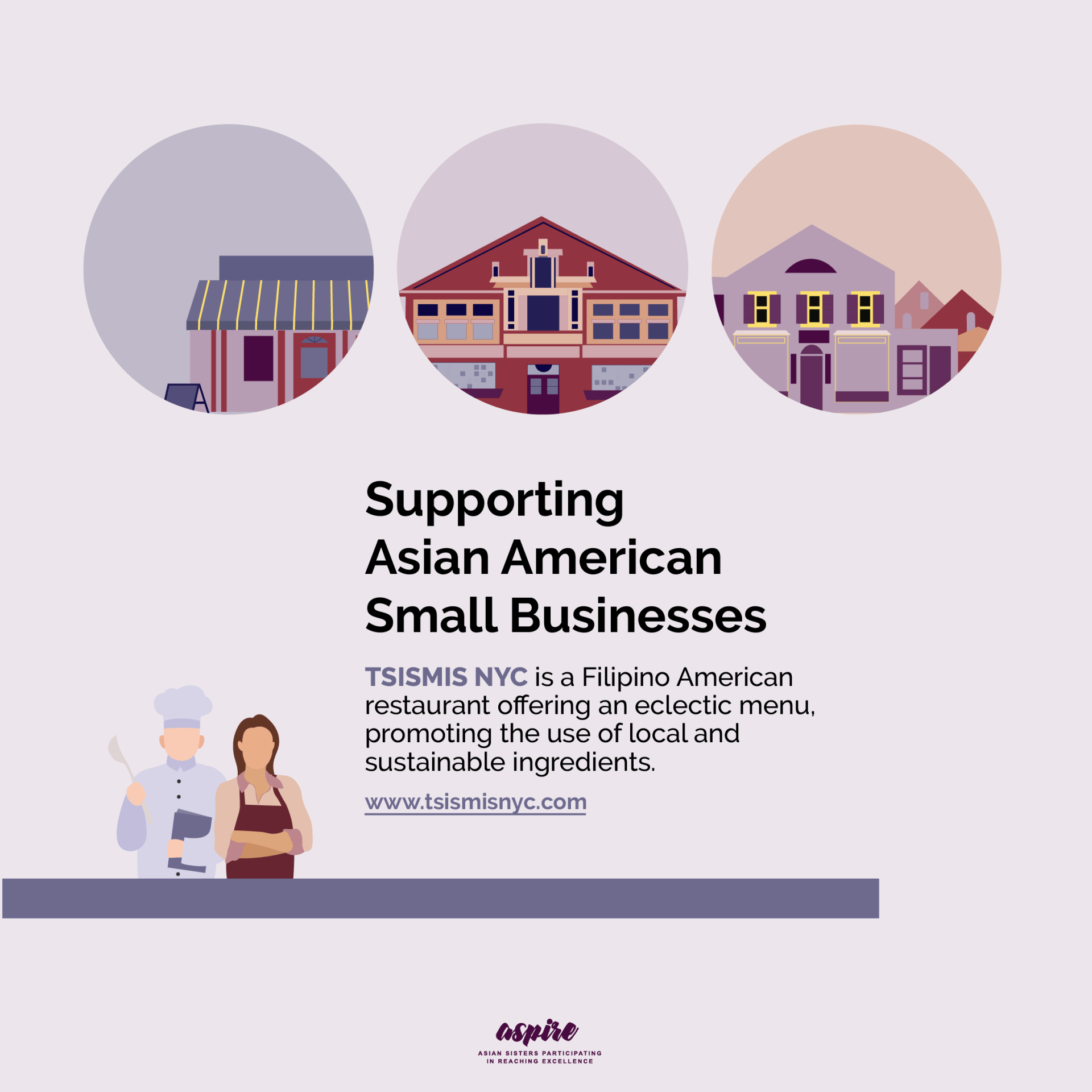A Guide to Being an AAPI Ally to Black Lives Matter
ASPIRE null • June 8, 2020
How ASPIRE is taking action for the Black Lives Matter movement

Written by Kyra Ching, ASPIRE's Social Media Manager
The Asian American and Pacific Islander (AAPI) population consists of Americans who trace their heritage to one or more Asian countries including, but not limited to, Cambodia, China, India, Japan, Malaysia, Pakistan, the Philippine Islands, Thailand and Vietnam. It also includes people from the Pacific Islands like the Hawaiian Islands, Samoa, Guam, and Tonga.
By the mid 1900s, Black and Asian citizens were fighting many similar injustices and there were times when members of both groups came together to persevere by helping each other. A figure that was truly representative of this was Grace Lee Boggs. After moving to the Midwest due to lack of work opportunities caused by discrimination, Grace connected with the black community in Chicago who were fighting poor living conditions. After moving to Detroit, Grace met her husband, James Boggs, with whom she would advocate for shared causes including Black Power, Asian Americans, and feminism. She has been associated with both Malcom X and Martin Luther King, Jr. After Grace died at 100 years old, she was commended by 44th President Barack Obama for her leadership in civil rights. Grace Lee and James Boggs were one of many examples of Asian American activists supporting and joining forces with Black activists to fight for the same causes, and this has impacted our community greatly.
The Asian Civil Rights Movement grew after taking inspiration from Black Civil Rights Movements. They started protesting and organizing in ways that drew parallels to similar events in Black and Latino communities. There were people arrested, including Peter Yew who was brutalized by the police after a traffic mishap between a white person and a Chinese person in 1975. This provoked a protest rally of 20,000 that led to Chinatown’s businesses shutting their doors, with signs that read “Closed to Protest Police Brutality.” After weeks of public pressure, charges against Yew were dropped. This was not unlike how Rosa Parks’ arrest sparked a boycott that inflicted serious repercussions on the transit system, leading to desegregation of public transportation. However, the incident made it clear that Asian Americans were willing to protest for their rights.
So for Asian American and Pacific Islanders who may claim it’s not our race, not our problem or that we do not owe anything to anyone else --- is that true?
Objectively speaking, we have benefited from Black activism. They have inspired our community in the past to fight for our own beliefs. Asian Americans protesting has had an impact on our community so if nothing else, we should at least have empathy for those doing the same.
It would benefit Asian Americans to advocate for the racial equality and equity for all, not just when applicable to us. AAPIs were forced to confront the underlying racism that the 2020 pandemic exposed. Coronavirus has affected the entire world but has had especially drastic consequences for Asians in Western countries. There has been a significant avoidance of Asian restaurants, bullying of Asian students, and assault cases against Asian families. In reaction to such hatred, Asian Americans have been understandably pained. Some members of our community have questioned allies’ support despite public condemnation of malicious treatment by people of all ethnic backgrounds.
Allyship needs to be mutually beneficial.
If we demand other communities’ obligation to support us in the name of fighting racism, we are obligated to support them in their fight against racial injustice. When Asian communities were experiencing racism, black people condemned the discrimination and supported Asian businesses and restaurants. Furthermore, Black communities have been hit extremely hard by the pandemic. Multiple reports have shown Black Americans contracting and dying from COVID-19 at higher rates than other races. There's also less testing in Black communities due to the unequal access to healthcare that has been an ongoing issue.
That said, how can Asian Americans support the Black community during this time?
Step 1)
Learn about the
Black Lives Matter
movement, and share with others. Black Lives Matter is about the long and difficult history of oppression and discrimination Black men, women, and non-binary have experienced in America, a country built on systemic racism. George Floyd and Breonna Taylor are just two of the thousands of names that have lost their lives in the hands of police. Some have become a hashtag, but for most, we will never know their names.
- List of anti-racism resources, including books to read, TV shows and movies to watch, and podcasts to listen
- List of Asian American allyship actions
Step 2)
Challenge the model minority myth and confront any bias you may have normalized about other ethnic groups as well. Here are some resources to check out.
Step 3)
Sign petitions! This is a quick and easy way to show your support. A few causes like George Floyd, Breonna Taylor, Ahmaud Arbery and Get Officers Charged are on this list of petitions: https://blacklivesmatters.carrd.co/#petitions. There are also plenty of petitions that still haven't reached their goals, and a lot of them can be found in Twitter threads. Here's one
to help get you started.
Step 4)
Show solidarity on social media. Support the movement, share resources, and use hashtags. If you are not Black, please use your platform to amplify the voices of the Black community first. Follow Black leaders, activists, and creators - share their posts and articles to learn about their stories and perspectives.
Step 5)
If you can afford it, donate to the Black Lives Matter movement. There are numerous local and national organizations that need funding. like Black Lives Matter, NAACP Legal Defense Fund, American Civil Liberties Union, and many mutual aid funds and bail funds. You can also watch YouTube videos
to donate to various causes.
- List of Massachusetts and Boston-area organizations
- Directory of bail funds nationwide
- More places accepting donations
Step 6)
Support Black people, including, but limited to: Black business owners, Black authors, Black creators, Black chefs, Black directors, Black actors, and much more. From small businesses to restaurants, see which places are taking orders online or offering delivery and takeout.
- Black-owned restaurants in Boston
- Black-owned businesses in Boston
- Black-owned businesses in Cambridge
- Black-owned independent bookstores, including Frugal Bookstore in Boston
- Black-owned beauty brands and fashion brands
- Black-owned businesses
Step 7)
Don’t be a bystander. Call out racism and have conversations. If Black people are being discriminated against, speak up. Earn the trust of the Black community, recognize entitlement, and always strive to oppose the injustices they face and support racial justice.
Step 8)
Research where you are spending your money. Are those companies supporting Black Lives Matter and donating to causes? If not, find companies that are.
Step 9)
Is Black Lives Matter a conversation in your family? If not, you can make it one. Letters for Black Lives
is a set of crowdsourced, multilingual, and culturally-aware resources aimed at creating a space for open and honest conversations about racial justice, police violence, and anti-Blackness in our families and communities.
Step 10)
If you feel safe, join a protest. If you are attending one, please be careful and considerate of the safety of yourself and those around you. If members of the community are telling you that they do not like how you represent them and their cause, value their perspective and do not invalidate their feelings.
Step 11) Contact those in political office to encourage change! There have been a multitude of these instances in Minnesota, Kentucky, and Georgia concerning very recent police brutality cases. However, these systematic issues are not isolated and thus you can let your region’s representatives know that Black Lives Matter to their constituents. A great resource for this is the Join Zero Campaign.
-----
Our allyship will not stop once social media timelines return back to normal. ASPIRE has stood with the Black community and we will continue to learn, listen, and support in any way possible today, tomorrow, and everyday. We have a story highlight titled “BLM” on our
Instagram page for more resources and ways to be better allies. Our
Twitter also has similar BLM resources and we'll continue to advocate for Asian American-Black solidarity.
Finally, please don't forget: silence does not inspire change. Conversations and actions do.
Sources used:
- https://www.nps.gov/articles/civil-rights-act.htm
- https://www.advancingjustice-aajc.org/report/50-years-voting-rights-act-asian-american-perspective
- https://www.aafe.org/who-we-are/our-history
- https://www.npr.org/templates/story/story.php?storyId=214833622
- https://medium.com/authority-magazine/i-am-living-proof-of-the-american-dream-if-you-believe-you-can-achieve-something-that-is-half-9d37d62b2229
- https://www.smithsonianmag.com/smithsonian-institution/from-the-civil-war-to-civil-rights-the-many-ways-asian-americans-have-shaped-the-country-49762201/
- https://www.complex.com/life/2016/03/asian-americans-activists/grace-lee-boggs
- https://www.theguardian.com/us-news/2015/oct/06/grace-lee-boggs-detroit-activist-dies-age-100
- https://www.npr.org/2020/05/29/865261916/a-decade-of-watching-black-people-die
- https://www.wired.com/story/covid-19-coronavirus-racial-disparities/
- https://www.rollingstone.com/culture/culture-news/george-floyd-protests-bail-funds-police-brutality-black-lives-matter-1008259/

This AAPI Heritage Month, we had the honor of interviewing Nellie Ling, the founder of ASPIRE! Learn more about her motivations to create ASPIRE, reflections on work-life balance, and advice for young AAPI leaders. 1. What motivated you to create ASPIRE? For most of my middle school and high school years, I grew up as the sole AAPI at my schools in the deep south. I had limited access to mentors and role models that looked like me or had shared backgrounds or experiences. When I moved to Boston as a young professional, I was overjoyed by my surrounding community of accomplished and supportive AAPI women from various professional and academic fields and backgrounds. I wanted to explore ways to leverage the collective experiences of this community of AAPI women to provide mentorship and leadership for young AAPI girls. With a few friends, I started visiting high schools to gauge interest in a mentorship and leadership program designed specifically for AAPI girls, and the overwhelmingly positive response fueled the creation of ASPIRE. 2. What do you think has changed the most for AAPI women since you have started ASPIRE? I love that there are more resources for the AAPI community to come together and connect now. There are multitudes of AAPI organizations and programs, and through social media, these resources are even more accessible today. I also appreciate that there is more diverse representation of AAPI women in media today - various ethnic backgrounds, differing professions and life experiences, and an array of personality and body types. Though challenges for AAPI women still exist, I hope that young AAPI women today feel less pressure to conform to static archetypal characterizations and expectations that society has put on AAPI women in the past. 3. How did you balance starting a non-profit and advancing your professional career while maintaining your personal life? I worked in a demanding advertising job, loved spending time with friends in this newfound AAPI community that I had never had before, and started dating my (now) husband while I was starting ASPIRE. It was a lot! But when you spend long hours planning and organizing with people you genuinely enjoy being with, hard work doesn't feel as hard. The community of ASPIRE women I worked with was so incredibly talented and generous - we had an attorney on our board that helped us file for non-profit status; we had marketing and PR professionals that formed meaningful connections with the Boston community; we had graduate students that served as bridges to academic resources. There have been many women building ASPIRE over the years, and this community is one that continues to give and pay it forward. 4. What accomplishment are you most proud of? Founding ASPIRE and seeing it still supporting young AAPI women today is certainly up there! I also find joy in partnering with local schools to build Community Service Learning programs, which integrate opportunities for hands-on service with curriculum in classrooms. While my professional, community and academic endeavors have helped shape how I view and interact with the world today, I feel most privileged to be raising my three daughters (16, 15 and 9 years old) and supporting their dreams and interests. 5. What advice would you give to AAPI women who want to be in leadership positions? I would stress the importance of finding meaningful mentorship - which may come in the form of somebody that looks like you or somebody that is ostensibly different. I have a beloved mentor, an African American man with southern roots, that I met in high school. He supported me in starting a community service club at that time. We were an unlikely pair, and yet he became like a father to me - an unconditionally supportive adult in my high school years, a reassuring voice that was a phone call away while I was navigating college, and a grandfather figure to my kids today. 6. How do you stay motivated during challenging times? Perhaps due to my prior work in user experience, I try to remember "who" and "what" I'm ultimately trying to impact when I face challenges or obstacles. When I keep in mind how my efforts may affect others, whether in the short or long term, that helps fuel me. I also find working with (or even just brainstorming with) people you enjoy being with to be a great motivator. 7. Who inspires you and what inspires you about them? I find so many people inspiring! One of my all-time heroes is Jane Goodall. Her courage and passion for the planet and its inhabitants are unmatched. I most appreciate how she is able to persuade people - from both sides of the table - to listen to her and take action. She is rarely the loudest or biggest person in the room, and yet she commands small conference rooms and large stadiums with her sense of purpose. I am also inspired by people who perform simple acts of kindness when nobody is watching. 8. What is bringing you joy? In the current climate of uncertainty, I find the most joy in the "normal." Whether it's working on a large puzzle with my husband and kids while listening to our Spotify playlists or impromptu dog walks (with our dog that doesn't like to walk), these small moments are sometimes the most rejuvenating. I also try to prioritize making time for friends that fill my bucket - the ones that make you laugh until you cry, the ones you can sit or walk with in silence, and the ones that cheer for you and celebrate you as you are.

Written by Anita Nham, ASPIRE's Marketing Director We’re continuing our series to promote Asian- & Asian American-owned restaurants! Our next spotlight is on Small and Sweet Bake. Its mission is to bring you a unique cupcake experience that is sure to leave you with a sweet taste and a big smile. The refreshingly modern take on the beloved cupcake is infused with sweet and savory Asian flavors or ingredients. Read our interview with owner and baker Cindy below. 1. What is the story behind Small and Sweet Bake? When and how did this come about? Small and Sweet Bake came about in my life at a time when I was looking for a change of pace and a new challenge…what better way than to start my own business? I’ve always had a soft spot for sweets and a particular fondness for cupcakes. Why not meld my favorite dessert with flavors familiar to my background? 2. Why did you decide to create Small and Sweet Bake? Is it a one-person team? I thought it'd be neat to introduce cupcakes infused with Asian flavors! I am a one-person operation, although my husband helps out with some deliveries and when I’m at SoWa. 3. What is it like managing a pop-up and delivery business? What are the advantages and disadvantages? I had to pivot my business to making deliveries during the pandemic. This allowed me to keep going through the months of quarantine. Without a storefront, pop-ups are a great way to test out different markets. They’re also a hub where people can pickup. After several months of contact-free deliveries, I finally got to meet some of my customers face-to-face! On the flip side, it can be very hectic managing a pop-up and delivery business. Lots of running around! Organization and a streamlined process is key to making it work. 4. As an Asian American-owned business, do you feel like you have faced specific challenges during the pandemic? We’ve all faced varying challenges during the pandemic. I launched my business at the end of February 2020 and within a month, everything was shut down. Like everyone else, I had to figure out how I should move forward. 5. There are new flavors at Small and Sweet Bake every month. What's the process for creating a new recipe, and how do you know when it's ready to be shared? It starts with an idea. I figure out each component of the cupcake and how they can best represent the new flavor. This is where I decide on the flavor of the cake, the frosting, and whether it should have a filling or toppings. Testing usually comes next; how vigorous it is depends on whether I am trying out a new ingredient or technique. I usually have several new flavors/recipes stored up until it can be worked into a specific lineup.

Written by Kyra Ching, ASPIRE's Social Media Manager What is Lunar New Year? Lunar New Year starts with the first new moon of the year. Other names commonly associated with the holiday are Chinese New Year and Chinese Spring Festival. The dates vary annually due to the moon cycles, generally between January X and February Y. This year, it starts on February 12th! Lunar New Year is celebrated by many Asian families around the world and is a popular celebration in emigrant Chinese, Korean, and Vietnamese communities. How is Lunar New Year celebrated? It depends. Lunar New Year includes many rituals and traditions! Here are some major ones: Seeing family and friends People will share their wealth with others by handing out red money envelopes. The practice varies among cultures. For example, Cantonese folks receive money until marriage (upon which then the couple starts giving envelopes), and Taiwanese folks start giving money once they work. No matter the culture though, there is one common intent: wishing everyone prosperity. In Korean families, they may use satchels and the money may come with messages and blessings for the new year. Putting up new decor Lots of red is incorporated into people's decor for Lunar New Year! Red is meant to keep the beast Nian away. Chinese families may also use floral arrangements to decorate, too. In Vietnam, apricot and peach blossoms are significant. In North Vietnam, local legend has associated the peach blossom with powerful deities that protected the people of the region. The apricot blossom is considered a symbol of spring in Southern Vietnam. In Korea, birds are used in decoration; cranes represent longevity and magpies mean good fortune. It’s common to clean in the days leading up to Lunar New Year and to buy new clothes. The reason is to clean out bad luck and start the year anew. There are also Lunar New Year markets that sell various products needed. Aside from red envelopes, people like to buy new decorations, firecrackers, incense, flowers, and fruit. For example, in Hong Kong, it's common to visit the city’s flower markets. Popular flower choices will include orchids and cherry blossoms. These 花市 (flower markets) will have lots of goods that feature the year's zodiac animals. Praying at the temple Worshippers will light incense and pray for blessings and luck during their temple visits. Depending on the temple, there may be dragon and lion dances nearby! Other traditions specific to Korean culture include wearing the hanbok , which is traditional dress. There is also seh bae , a ceremonial ritual with a focus on the family and ancestors. What does the year of the Ox mean? There is a Chinese word, shuxiang, which means the animal assigned to one’s birth year. One of the most prominent myths behind the Chinese Zodiac is the Great Race. The first 12 animals to complete the race earned spots on the 12-year zodiac calendar, which is why the cycle repeats every 12 years. The story also incorporates the animals’ personalities into how they complete the race. 2021 is the year of the Ox. During the Great Race, the Ox assisted the small Rat across the river. The Rat leapt ahead at the end, securing 1st place. Still, the Ox claimed 2nd thanks to great strength. After the Tiger took 3rd, the Rabbit finished 4th by using stones and logs to cross the river. The Dragon came in 5th, having stopped to help others along the way. The Horse was a strong competitor, but the Snake snuck past the Horse at the very end and secured 6th place. The Horse finished 7th. The Sheep, Rooster, and Monkey worked together to cross the river on a raft. The Sheep was given 8th place, followed by the Monkey and Rooster in 9th and 10th places. The Dog preferred to play in the water instead of racing and finished in 11th place. The Pig finished 12th, after eating and napping along the way. As the Chinese zodiac story spread through Asia, different cultures made modifications to appeal to their communities. How will COVID-19 affect Lunar New Year celebrations? Lunar New Year, especially in China, is the busiest traveling period of the year. However, COVID-19 has led to severe travel restrictions, impacting traditions for millions of families worldwide. Many Asian communities are resorting to virtual Lunar New Year celebrations, including workshops, performances, and more. Specific resources will be linked at the bottom. How to support Asian American businesses during Lunar New Year? Throughout the pandemic, Asian Americans have faced varying forms of discrimination, and Chinatown businesses have faced economic and social setbacks. This past week, Asian American activists and public figures have condemned the latest wave of violence against Asian Americans. In New York City and Oakland, grassroots organizations, such as Welcome to Chinatown and Save Our Chinatowns , are using Lunar New Year celebrations to support struggling Chinatowns in the US. These groups are raising money to keep Chinatown businesses open, as well as protect locals from xenophobic aggression. Check out the resources below for ways to celebrate Lunar New Year in 2021, as well as support Asian American communities during and after the pandemic! Celebrating Lunar New Year: Boston: Fo Guang Buddhist Temple Boston Tet in Boston Quincy Asian Resources New York: nycgovparks.org/events/lunar-new-year 6sqft.com/nyc-lunar-new-year-2021 The Metropolitan Museum of Art Phoenix Houston Seattle Learning about and supporting Asian American communities: nbcnews.com/news/asian-america/lunar-new-year-celebrations-year-aim-help-struggling-chinatowns-n1256525 advancingjustice-aajc.org Boston: aarw.org pbs.org/ancestorsintheamericas/aahistorysites.html UMass Amherst: umass.edu/asianasianamstudies/resources-links.html New York: aafederation.org browngirlmagazine.com/2020/06/7-asian-american-advocacy-organizations-you-have-to-follow-in-2020 Johns Hopkins COVID-19 and the Dynamics of Race and Othering Sources: https://www.nbcnews.com/news/asian-america/lunar-new-year-celebrations-year-aim-help-struggling-chinatowns-n1256525 https://abcnews.go.com/International/chinas-lunar-year-worlds-largest-annual-migration/story?id=60775990 https://www.timeout.com/things-to-do/most-beautiful-lunar-new-year-celebrations https://www.traveldudes.com/vietnamese-tree-tradition-for-tet-lunar-new-year/ https://www.thespruceeats.com/korean-new-year-celebrations-2118611 https://ed.ted.com/lessons/the-myth-behind-the-chinese-zodiac-megan-campisi-and-pen-pen-chen https://www.tripsavvy.com/the-top-traditions-of-chinese-new-year-4157975 https://www.tripsavvy.com/gifts-chinese-new-year-spring-festival-1494984 https://www.timeout.com/hong-kong/things-to-do/cancelled-chinese-new-year-events-and-traditions-for-2021 https://theculturetrip.com/asia/china/articles/10-chinese-new-year-traditions/ https://www.timeout.com/hong-kong/things-to-do/chinese-new-year-in-hong-kong

Written by Kyra Ching, ASPIRE's Social Media Manager We’re excited to start a series to promote Asian- & Asian American-owned restaurants to help bring awareness to them during and after the pandemic! At the end of 2020, ASPIRE reached out to TSISMIS NYC, a Filipino restaurant in the Lower East Side, to reflect on an unprecedented year for restaurants worldwide. Read our interview with executive chef Jappy Afzelius. Q: This past year has been unprecedented for everyone, especially restaurants. What has changed for your restaurant from the beginning to the end of the year? A: This year has been extremely difficult for restaurants as it offered an unprecedented set of challenges and the most difficult thing was learning to pivot to the new normal. With indoor dining almost non-existent the whole year, we had to completely learn to transition and capitalize on our online platform and streamline the menu. Focusing on contactless service like delivery and pick up, selling gift cards, creating an outdoor scene, and altering our menu to feed the front-line workers and work-from-home employees. It’s been tough but with the support of the community, we were able to adapt and pivot TSISMIS NYC to navigate these trying times. Q: For an Asian American restaurant in particular, do you feel you have faced specific challenges during the pandemic? A: Yes, specifically being a Filipino restaurant serving a cuisine that has not broken through the mainstream market yet as opposed to our South-East Asian neighbors like Thai cuisine. It’s been twice as difficult to get customers but with that being said we had to remain true to our vision in promoting Philippine food and culture in New York City. Q: According to your website, “tsismis” means gossip or idle talk. It is also the namesake of your restaurant; how has social distancing affected the experience of TSISMIS? A: Social distancing has tremendously affected the experience at TSISMIS NYC because we had built a casual environment inside the restaurant that focused on conversation and upscale Philippine cuisine with wine pairing. Luckily when outdoor dining opened and limited capacity indoor dining followed, our patrons slowly came back. Not as much as before, of course, but thankfully the “Tsismis” has already been spread pre-COVID times and we were able to build a relationship with our clients from both the Lower East Side and Filipino-American community. Q: Not only is TSISMIS a local restaurant, but you also promote the use of local and sustainable ingredients. How can people support local farms during this time? A: This has been vital to our operation as we source both locally and organically for our menu. Local farms and producers, like restaurants, would need all the help they can get so the best way is for people to shop from local farms and producers when they are in the supermarkets and to visit farmers markets when possible. Being situated here in New York City, we have an abundance of local organic markets like Union Square Market and other establishments like Smorgasborg that support local small businesses like us. Q: Are there any particular farmer’s markets or vendors you recommend? A: There are quite a few but my favorite would always be to go to Union Square Greenmarket for organic seasonal produce and of course going around the various small vendors around Chinatown as well. Q: As the Executive Chef, do you have any favorites from your menu? Why? A: This is a tough question as I am fond of our entire menu but if I had to choose it would be our “Kale Laing.” I am very proud of this dish as it was one of my favorites to eat growing up and i believe it represents the Philippines very well as it contains all the flavors that define our cuisine like “bagoong” fermented shrimp paste, “tinapa” smoked fish, ginger, coconut milk and “sili labuyo” - birds eye chili. [According to TSISMIS NYC’s menu, Kale Laing is “local kale sautéed with shrimp paste and coconut milk.”] Q: Do you have any advice for Filipino-Americans who’d like to enter the restaurant industry? A: The best advice I can give is to be passionate - give it 110% your best daily. It’s a tough industry but if you sacrifice, persevere and focus on helping raise [awareness and interest in] Philippine cuisine to the world then it becomes a rewarding and fulfilling experience. Q: What would you like our audience to know about your restaurant and Filipino culture, in general? A: TSISMIS is a very simple place where we showcase traditional dishes from the Philippines that we ate with our families growing up and is all about sharing Philippine food and culture in New York City. The best thing I can say is that Philippine cuisine is wonderful and has so many exotic flavors to showcase; it’s new and exciting. Please come and give it a try and I am certain that it will exceed your expectations and you will definitely have an unforgettable experience. Many thanks to Jappy and the TSISMIS team for this interview! TSISMIS NYC is available for delivery via Grubhub or Doordash . For pickup, use their online ordering system or call. Not in New York or not ordering out but still want to support? You can order gift cards and amazing merchandise ! TSISMIS NYC socials: Instagram , Facebook , YouTube Enjoyed the food? Leave a review! - Yelp - Open Table - Trip Advisor - You can also leave a review on Google by searching TSISMIS. Farmer’s markets and other related resources in NYC: grownyc.org/greenmarket For more information on the Union Square Greenmarket: unionsquarenyc.org/events/2019/3/27/union-square-greenmarket

Written by Kyra Ching, ASPIRE's Social Media Manager Christmas in the Philippines is celebrated not only on December 25 - it can last for months! Filipino Christmas traditions can start as early as September and last until January. It’s the longest Christmas season in the world. While many Filipinos live and work abroad, this time is anticipated for people to return to their families. The lengthy Christmas period would give people time to plan their Christmas, including where they will spend the holiday and gifts they need to get. Some Filipino Christmas traditions are: Simbang Gabi - Holy Mass is celebrated from December 16th to 24th. Goodies such as rice cakes and tsokolate, Filipino hot chocolate, are sold outside churches. Churches are lavishly decorated, often with life-size nativity scenes. The capital of the Philippines, Manila, is decorated with Christmas lights. About a million Filipinos will visit Manila in most Decembers. They host Christmas parades from September to December, too! Did you know returning Filipinos are called bagong bayani aka the “new heroes"? Filipino musicians and performing artists come to countless venues, booked throughout the Christmas season. They play classic songs like Noche Buena , which is centered around the family meal during Christmas Eve. During the Christmas season, especially Noche Buena, or Filipino Christmas Eve, families gather to eat dishes such as Christmas ham, Keso de Bola, Pancit Malabon, sweet spaghetti, Lechon, Buko Pandan, Kakanin, and fruit salad. Keso de Bola is the local name for Edam cheese. Pancit Malabon is a yellow-colored, festive noodle dish. Lechon is a pork dish. Buko Pandan is a pandan flavored gelatin mixed with coconut and cream. Kakanin is a rice dessert. Due to the pandemic and typhoons, this year has been extremely challenging for Filipino families and communities. Donate and support Filipino organizations and small businesses as well as for natural disaster relief. Filipino organizations and businesses in: New England: pamanainc.org/organizations-interest-groups Boston: bosfilipinos.com NYC/Jersey City: ny.eater.com/maps/best-filipino-restaurants-nyc New York: thrillist.com/eat/new-york/best-filipino-food-in-nyc and theculturetrip.com/north-america/usa/new-york/new-york-city/articles/the-top-10-filipino-food-locations-in-new-york-city Natural Disaster Relief links: redcross.org.ph unicef.org/philippines/take-action disasterphilanthropy.org/disaster/super-typhoon-goni fashionista.com/2020/11/filipino-philippines-typhoon-relief-fashion-industry Sources: https://www.thekitchn.com/christmas-in-the-philippines-christmas-around-the-world-198478 https://theculturetrip.com/asia/philippines/articles/this-country-has-the-longest-christmas-on-earth/ https://www.cbc.ca/news/canada/calgary/philippines-lantern-kits-typhoons-donate-1.5820421 https://www.theguardian.com/world/2020/nov/18/philippine-tradition-of-long-christmas-survives-covid-and-typhoons https://christmas.365greetings.com/christmas-songs/tagalog-christmas-songs.html https://www.nationalgeographic.com/photography/proof/2017/12/christmas-philippines-diaspora-overseas-workers/ https://www.youtube.com/watch?v=Z0QI5u5TCUY https://www.vice.com/en/article/k7a83w/filipino-christmas-ad-disney https://www.thespruceeats.com/philippine-noche-buena-feast-3030319






